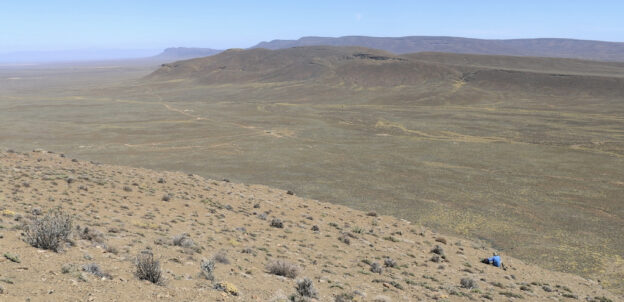Keep me free and I’ll keep you wild
Bees don’t need us to manage them—they need us to protect their wildness.
Wild honeybees and solitary bees are a crucial thread in our ecology. They have adapted and evolved over millions of years and are continuing to do so where they are still wild. Leave them to be wild—and not in hives—and keep tracts of nature and pristine environments where nature thrives, so that they can continue to be wild. healthy. free.
Where there are birds there often are bees

Wild Bees
Bees play a pivotal role in biodiversity. In South Africa we have great diversity in the different types of bees

Who we are
Honeybees are cavity dwellers and the desert region is no exception. Join us on our field trips as we explore cavities of both honeybees and the numerous solitary bees
Featured article:

Rare and incredible footage of a Banded Bee Pirate wasp drinking from the mouth of a honeybee. Read more here!
From the Blog
-
Banded Bee Pirates: Honeybee Hunters with a Sweet Tooth

How These Predatory Wasps Use Honeybees to Fuel Their Survival and Reproduction.
-
Xylocopa io: The Rarely Seen Carpenter Bee

Some Xylocopa have interesting adaptations, like Xylocopa io with its elongated middle legs.
-
Far From Dead: The Surprising Biodiversity of Bare Ground

Occasionally, biodiversity might just be thriving beneath our feet.
-
The nest environment as more than just a dwelling for the honeybee

Burrowing mammals actively change their environment, and provide valuable microhabitats used by other species. These burrows offer other animals vital thermal refuges from temperature extremes and environmental fluctuations particularly in hot arid and semi-arid habitats.
-
About Bees, Naturally.

Should we keep bees? Arid to semi-arid environments are surprisingly rich in bee diversity. When most people think of bees, they often picture the honeybee (Apis mellifera). However, the reality is far more complex. Globally, there are over 23,000 bee species, the majority of which are solitary rather than social, as seen in honeybee colonies.…
-
Honeybees and Gomphocarpus filiformis (lammerlat): A source of propolis in the Great Karoo

Lammerlat resin as propolis with its cardiac-glycosidic properties could perhaps be beneficial for honeybees in ways that are not yet known, possibly also as a defence mechanism against predators…
-
The Historic Heuningklip sites at Kleinmond (Overberg) and Herbertsdale (Southern Cape)

“… we passed a large rock, which on account of its harbouring bees, has obtained the name Honingklip…”
-
The Karoo is a tough place to be a bee!

Surviving the Karoo: resilience in a harsh environment Being a bee on the Karoo plains is challenging. The Karoo is a boom and bust environment with short periods of spectacular productivity and long periods of drought and famine. Plants survive the droughts as seeds in the soil, or as long-lived small shrubs that are able…


